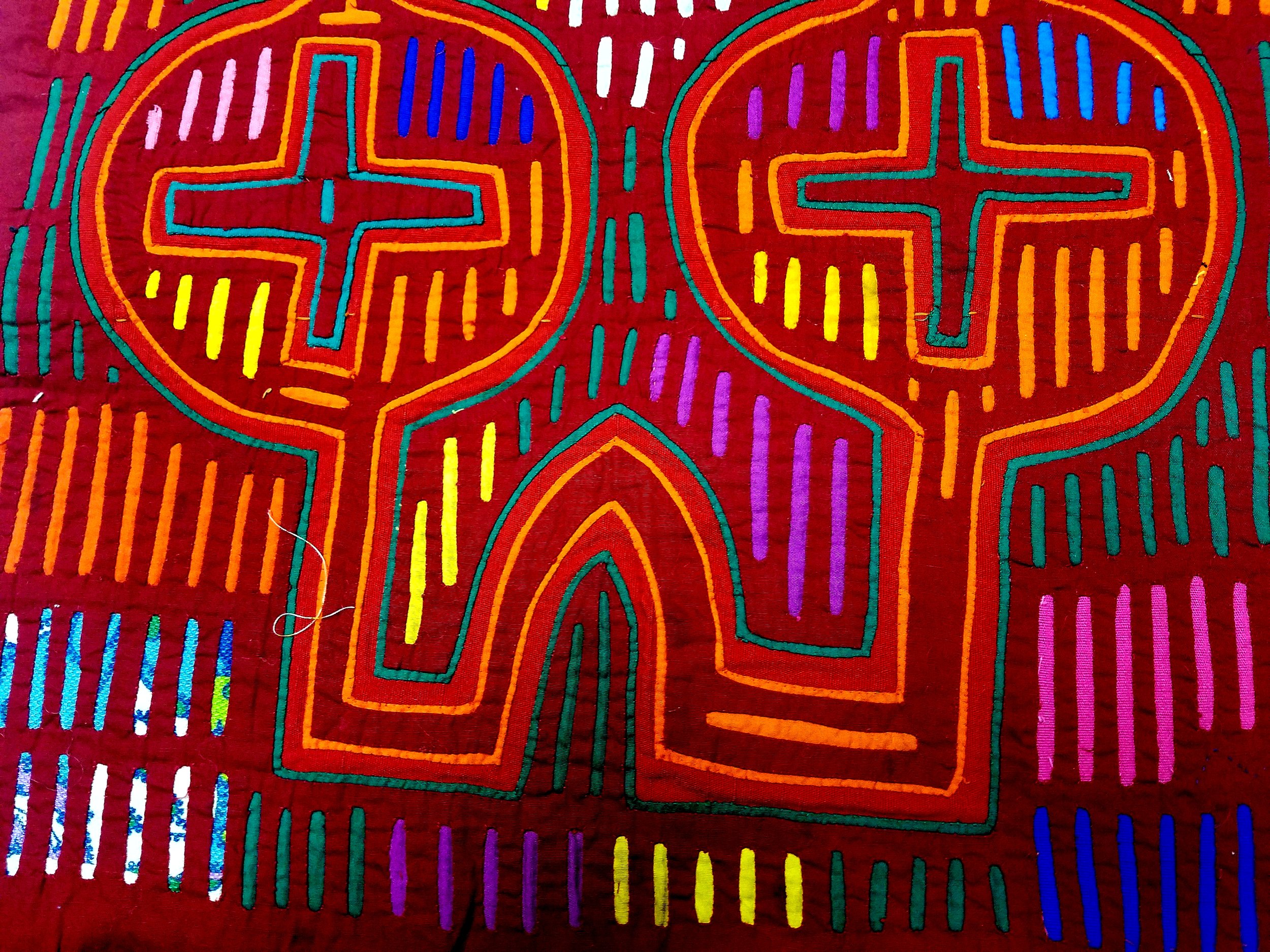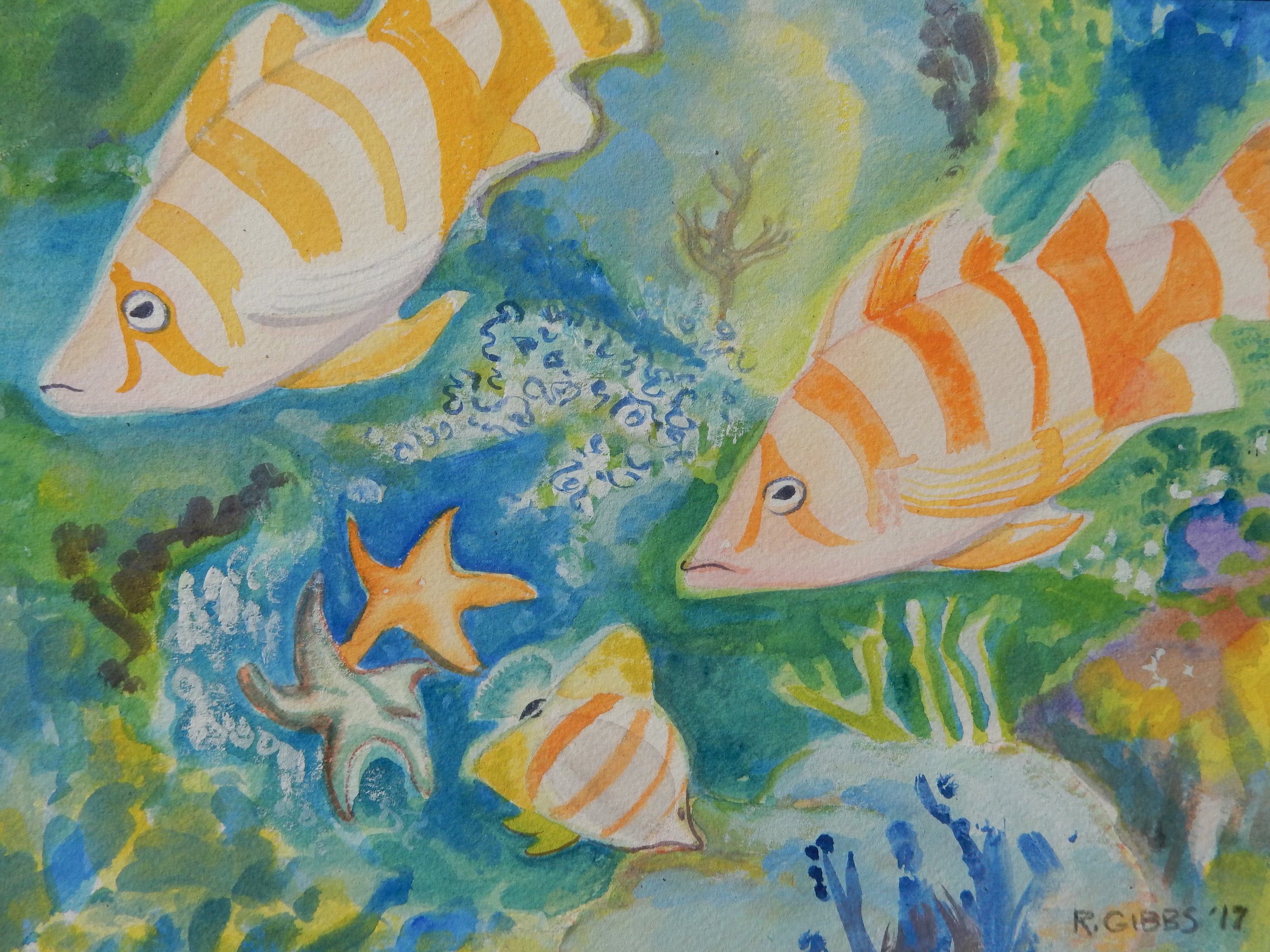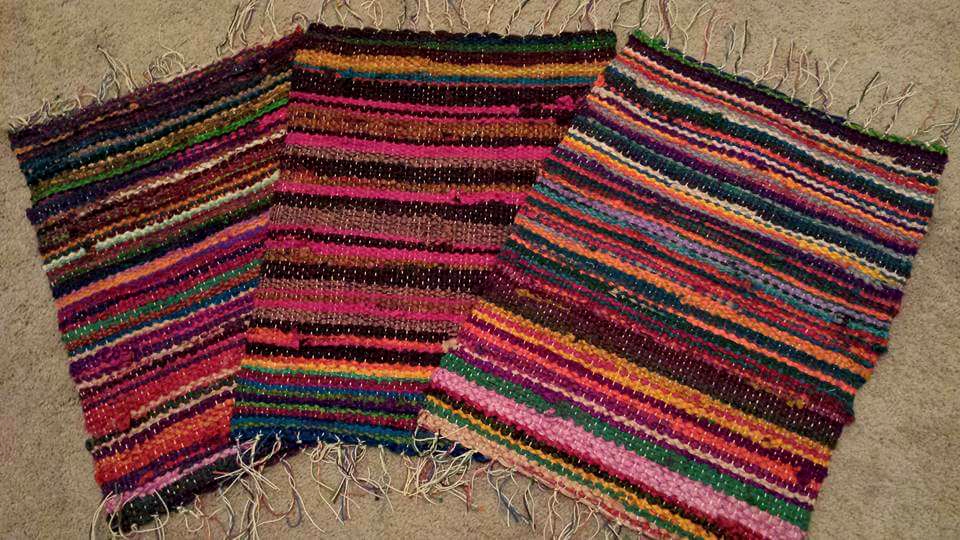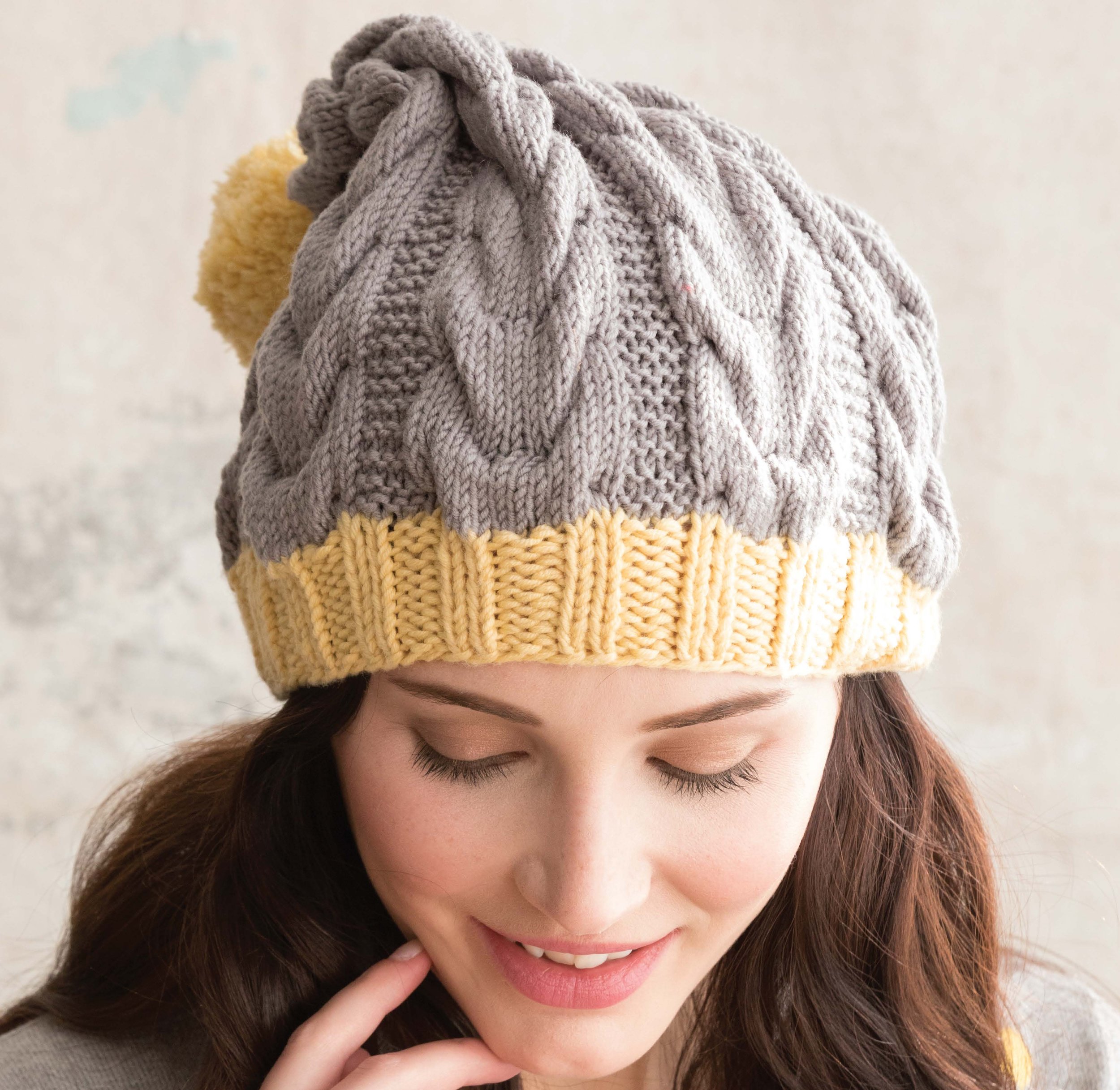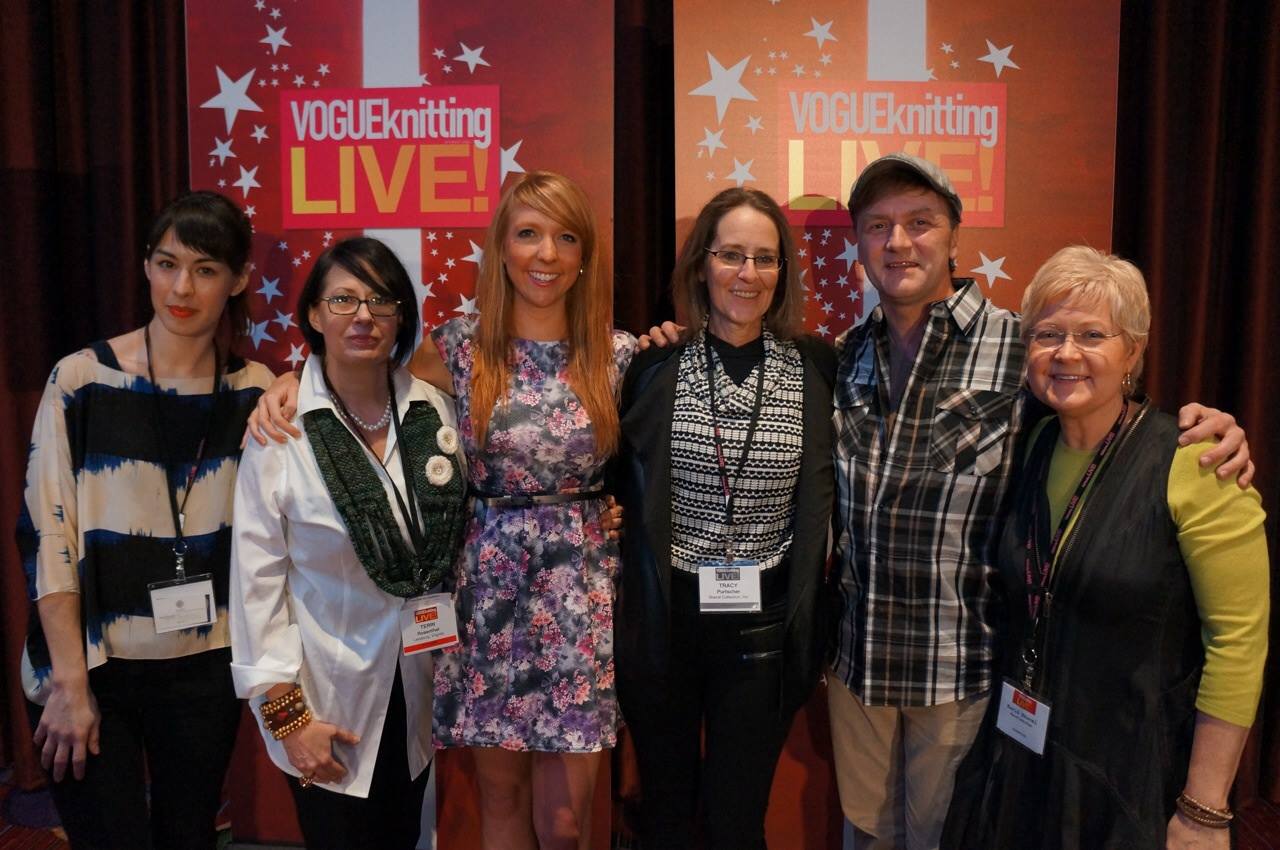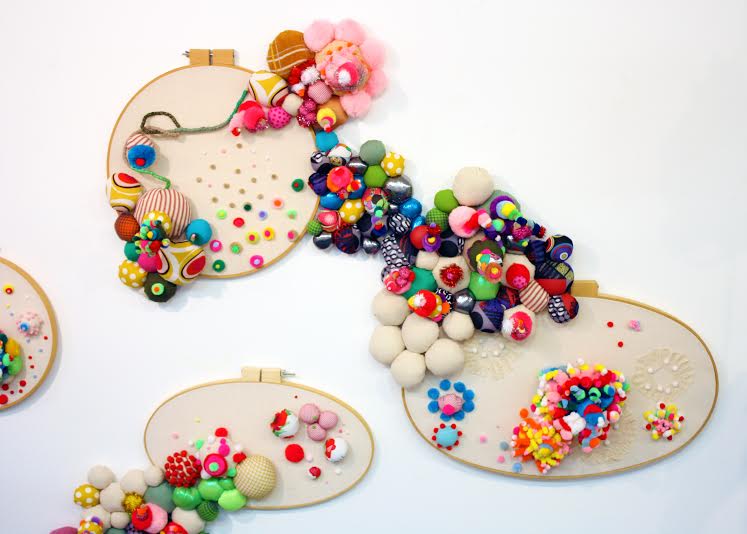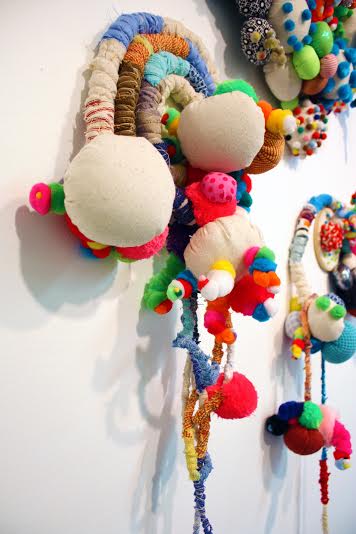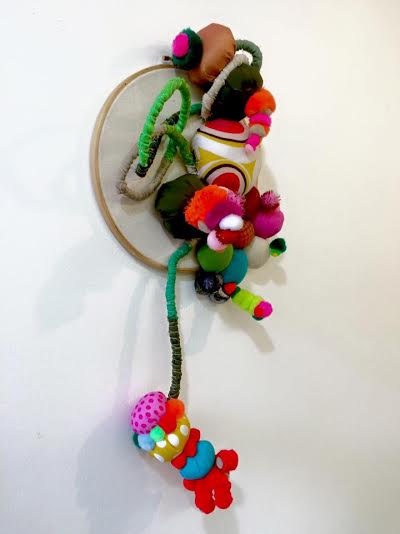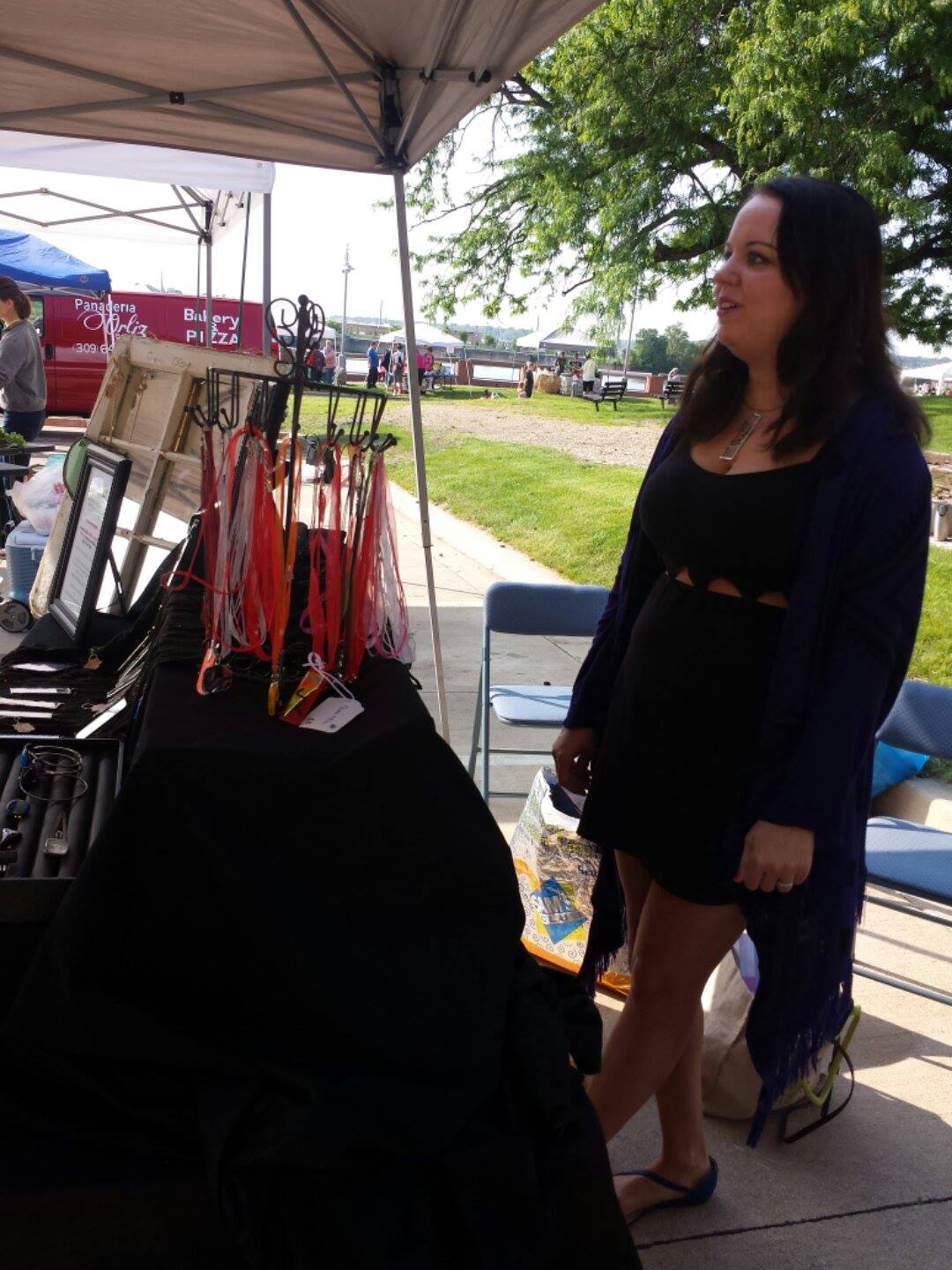When Vicki Leunig Phillips walked into The Sheared Edge carrying an armload of molas, I was excited! I've had a fascination with these colorful textiles for years, so to hold one in my hands and study it was an incredible experience!
A Guna woman displays molas she created in front of her home in the San Blas Islands.
What Is A Mola?
The word "mola" refers to the traditional Guna women's blouse or clothing that has beautiful colored fabric panels sewn onto its front and back. The fabric panels (mola) are usually about 13 inches x 16 inches and made from 2-7 layers of fabric that are cut and sewn, using reverse applique. Images range from geometric to local flora and fauna.
A mola is the textile symbol of the Guna Indian culture. It's Panama's expression of folklore and highly collectible by enthusiasts around the world. In 1961, the first molas were brought to the United States and introduced as art.
A Guna woman wearing a mola stands next to her clothes-line in Kuna Yala, Panama.
Below is a close-up image of a beautifully constructed mola. Each brightly colored fabric is a layer that is cut and stitched into place. The nearly invisible stitches take a very skilled hand to accomplish. A well-made mola can take over 6 months to complete.
Mola close-up
Origination Of The Mola
In 1514, according to Pascual de Andagoya, a Spanish conquistador, and Governor of Panama, the Guna women went topless and painted their bodies with geometric designs using dyes extracted from fruits and vegetables. When missionaries arrived in the 17th century, they convinced the women to cover their bodies. The body painting made its way onto fabric which the women then cleverly sewed onto their clothing.
Indian woman with semi-permanent body painting. She's holding a kinkajou, also known as a "honey bear."
Who Are The Guna Indians?
The Guna Indians are the indigenous people of Columbia and Panama. They were known as the Kuna (Cuna) before an orthographic reform in 2010. Most have settled on the San Blas Islands surrounding Panama and are "the last tribe of the Caribbean." The society is matriarchal with women being the breadwinners, earning their income by selling hand-made molas. The men contribute by working on the mainland, farming, fishing or the coconut trade.
The Guna women wear lots of jewelry, especially tiny beads wrapped from wrist to elbow and ankle to knee, resembling leggings. Most wear a gold nose ring (olazu) and rouge their cheeks in dark red circles. Mola embellished blouses are paired with a wrap-around skirt. A red headscarf completes the look.
Guna Indian women are wearing traditional dress and the mola. They have been resistant to Hispanic assimilation.
The origin of the Guna people is questionable. They may be descendants of the Caribbean Indians. However, some anthropologists believe that they originated in Southeast Asia 6,000 years ago. The similarity of the needlework between the Guna and that of the Hmong people of Laos, Cambodia, and Vietnam is impressive.
Antique reverse applique panel created by the Hmong People of Southeast Asia. This was sewn onto traditional clothing.
Vicki Leunig Phillips states that visiting foreign exchange students from South America during the 1960's gave her mother a gift of four molas (pictured below).
Here's a close-up of the Twin Birds mola that you will see when you visit The Sheared Edge. This particular piece appears to have four layers of fabric.
Another is the Double Cross or Church Mola. It's unusual that patterned fabric is layered into this creation.
Molas are collected as folk art and displayed in the world's most prestigious museums, like the Smithsonian in Washington, DC. Here is a collection of molas assembled into a wall hanging shown in the home of friends Margie and Gordon Foer living in Rhode Island.
We look forward to seeing you Friday, January 5 (5-9 PM) at The Sheared Edge, the Studios on Sheridan. Meet collector Vicki Leunig Phillips and be transported to another time and place when you view her colorful and exotic collection.
Vicki Leunig Phillips








